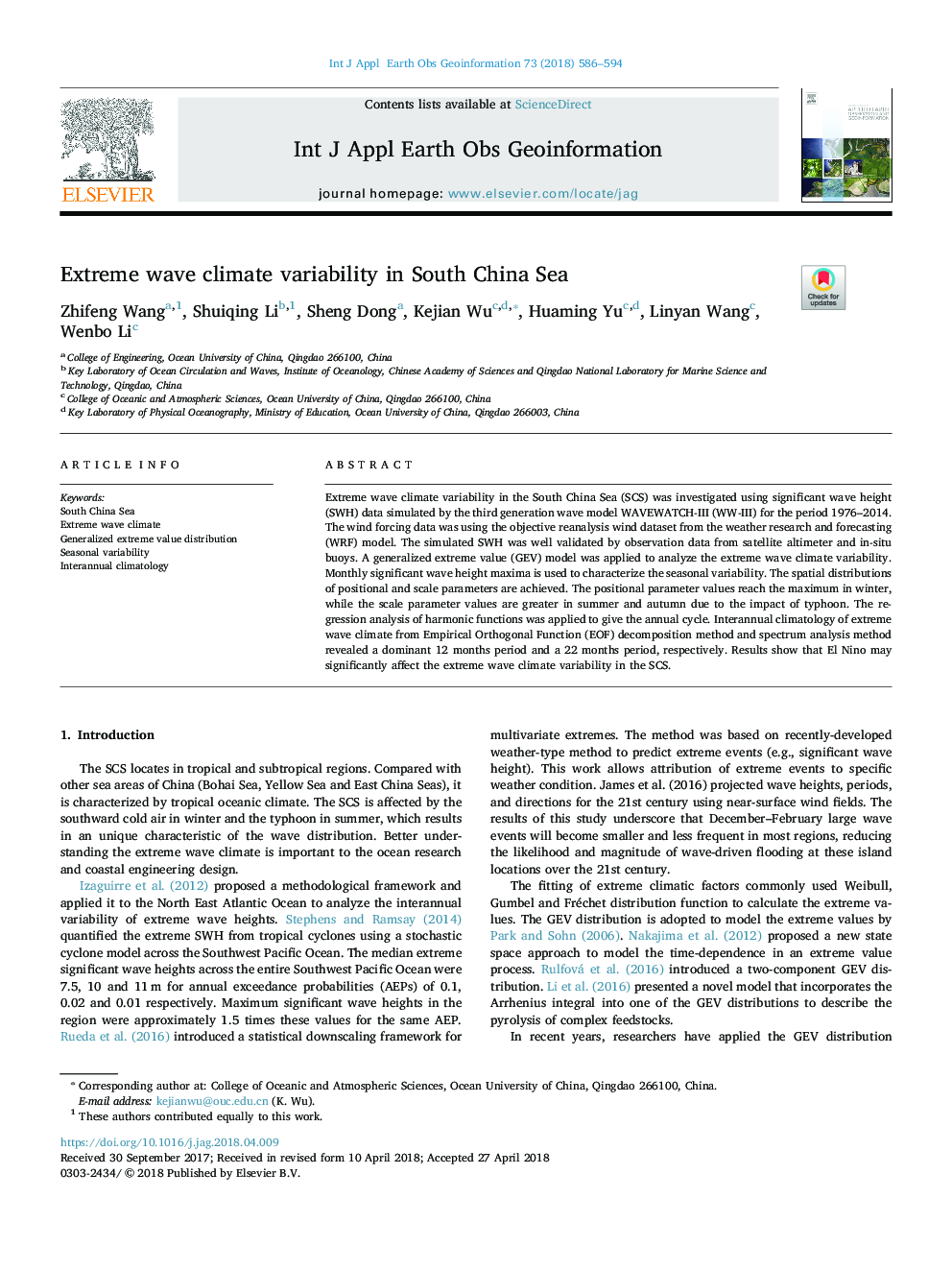| Article ID | Journal | Published Year | Pages | File Type |
|---|---|---|---|---|
| 10115565 | International Journal of Applied Earth Observation and Geoinformation | 2018 | 9 Pages |
Abstract
Extreme wave climate variability in the South China Sea (SCS) was investigated using significant wave height (SWH) data simulated by the third generation wave model WAVEWATCH-III (WW-III) for the period 1976-2014. The wind forcing data was using the objective reanalysis wind dataset from the weather research and forecasting (WRF) model. The simulated SWH was well validated by observation data from satellite altimeter and in-situ buoys. A generalized extreme value (GEV) model was applied to analyze the extreme wave climate variability. Monthly significant wave height maxima is used to characterize the seasonal variability. The spatial distributions of positional and scale parameters are achieved. The positional parameter values reach the maximum in winter, while the scale parameter values are greater in summer and autumn due to the impact of typhoon. The regression analysis of harmonic functions was applied to give the annual cycle. Interannual climatology of extreme wave climate from Empirical Orthogonal Function (EOF) decomposition method and spectrum analysis method revealed a dominant 12 months period and a 22 months period, respectively. Results show that El Nino may significantly affect the extreme wave climate variability in the SCS.
Related Topics
Physical Sciences and Engineering
Earth and Planetary Sciences
Computers in Earth Sciences
Authors
Zhifeng Wang, Shuiqing Li, Sheng Dong, Kejian Wu, Huaming Yu, Linyan Wang, Wenbo Li,
